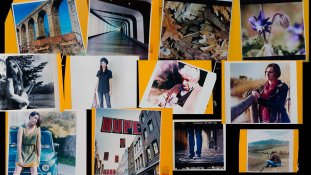Just another thought. You don't need to get the Expo Disc, but it is the best way I know to get a really dead accurate grey card negative.
You can use a grey card, or a part of a grey card, hold it in your hand and allow the light to fall on the grey card as you take the exposure. Then when in the darkroom, put the grey card negative in and place your probe so that it is only receiving the grey card image. Then adjust the enlarger dials until all three analyser lights go out, you then have correct colour balance.
As for push processing, pretty much nothing is certain, the more you push the more there is a possibility to get a colour layer crossing into another colour layer, thereby making technically correct prints impossible.
That said, technically incorrect prints, are not that bad. I have more than a few of them myself.
Mick.
You can use a grey card, or a part of a grey card, hold it in your hand and allow the light to fall on the grey card as you take the exposure. Then when in the darkroom, put the grey card negative in and place your probe so that it is only receiving the grey card image. Then adjust the enlarger dials until all three analyser lights go out, you then have correct colour balance.
As for push processing, pretty much nothing is certain, the more you push the more there is a possibility to get a colour layer crossing into another colour layer, thereby making technically correct prints impossible.
That said, technically incorrect prints, are not that bad. I have more than a few of them myself.

Mick.



